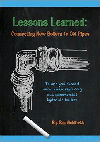PVF Forum: Your Most Valuable Asset
Whatever the case, one thing you will find when you do this type of analysis is that almost all of your uniqueness can be driven back to people (or maybe a person).
When wholesalers examine their business assets, they put them into categories such as accounts receivables, inventory and bricks and mortar. It is usually true that your largest asset is inventory. In most cases, it is the one that has the largest impact on your bottom line results. How it is purchased, what happens to it when it arrives, how good you are at picking and shipping it right the first time, and what you do when it goes nowhere, all impact your net profit. You spend countless hours working on making your inventory "right," although right is a relative term in distribution.
It can be right if it is within our budget. It can be right if we have what our customers want when they want it. It can be right if it moves. It can be right if we buy it right. However, there are many times when it is not right. No need to list those reasons here, as it would take too long.
Your inventory balance is a function of how well some of your other assets work. All assets have some performance ratios to help you manage them. Inventory turns is a commonly used calculation to track how well we are using our inventory asset. Revenue per employee is another often-used analysis.
People have a huge impact on your asset success ratios. But where is the ratio that tells you how well your people are using your software to manage your inventory? Where is the ratio that determines if your purchasing personnel understand how to control your inventory expense?
The bottom line is that people are your most valuable assets. You need to make them work at the most efficient level possible. Better yet, provide an environment for them to work more efficiently. To make that happen, you need to give them tools and training. You cannot expect them to hit performance goals with just the knowledge they acquire from being around a long time.
We all know this happens way too often. There is Joe in the warehouse who knows where everything is located. Why? Because either Joe put it there, or he told someone else to put it there. Or maybe he just spends countless hours running around the warehouse looking for products, and along the way he found everything else. The problem is that Joe does not pick every order. Joe does not receive every shipment. We have many others who work in the warehouse who need to be as "smart" as Joe.
The Training Imperative
Getting people up to speed to manage your assets takes a huge investment in training. In tough times, the dollars spent on training seem to disappear from the budget.Wrong idea, my friends. Training is an ongoing investment. What you spend on training usually yields a return greater than the dollars invested. Training should be budgeted for every department.
One area in which training should be a high priority is in purchasing. These folks spend more money than anyone in the company. They are often asked to use tools (some very antiquated) to guide them through the check writing process (writing POs to the vendors). They have to deal with numerous ordering control fields, features and functions that might be foreign to them.
They rely on the system-generated data to help them decide what to buy, how to buy and when to buy it. Your largest asset success ratios are dependent on them knowing how to use the tools properly.
For example, let's say we think we have the software system running pretty smoothly but we are always out of whack with our inventory. Where do we turn? Some of us beat up the purchasing personnel and just stop there. Some of us go after the warehouse folks and browbeat them. How many of us actually look to root causes - like maybe they do not know how to use the software!
What would happen if we had just a couple of the major inventory control fields set to the wrong variable? What impact does that have on our asset base and our service proposition?
Into The "Vault"
Another training area that needs attention is the warehouse, i.e., your company's vault. These folks often learn by osmosis. You know how it's done - one person follows another around until the newest person gets smart.What warehouse training have you done lately? Do your vault personnel ever get training other than osmosis? Do they understand your products well enough to know which need more care than others? Do they understand your profit initiatives by product lines or vendors?
Have you ever explained to them what is expected of them in terms of performance? Do you have any performance ratios to measure their work effort? Are they included in your vendor training sessions? Do they know how to read the system reports to help you monitor your largest asset?
After purchasing, number two in training priority should be the vault personnel. Once you get the products here, managing them properly through your warehouse people has a direct impact on your profit levels.
Support Troops Get Neglected
We tend to provide a great deal of training to our sales and customer service personnel and not to our other asset managers. This has a huge impact on our overall service goals.Having front line folks well trained and not training the back line folks defeats the purpose. What good does it do to have great sales and customer service people if we're not able to back them up with product and delivery?
Investing now in training might seem a tough deal given today's economic picture. We are all looking for ways to cut expenses and maintain respectable profit margins.
However, those who have not cut back on training are the same ones who will be better prepared for the next wave of a good economy. Those who are investing in better tools now (heck, many of the tools you can buy to help your personnel are also cheaper now), are the ones that will rise faster when the economic indicators rise. Those who have decided to pull in all the wagons will take longer to untangle them when it's time to run hard again.
Survival Of The Fittest
Having been in business for 20 years, I can tell you that weak economies serve a purpose in business. Just as in the jungles of Africa, the strong will survive. Weak economies weed out poor competitors - the ones that came in with a pricing strategy that made you sick, stole some of your business and lowered your margins. Now, will they survive with a weak infrastructure?I suggest they won't. Yes, they made life more difficult for you. Yes, they screwed up some of your customers. Yes, they caused you to lose your hair and some money. However, those of you who decided to continue to make your assets stronger will win in the end.
Your strongest assets are your people. What you do with them will have a huge impact on your "other" assets. Those of you who invested in making your strongest assets stronger will survive. Those of you who invested in tools in a down economy have a better arsenal to take to market on the sunnier days.
Your largest asset may be inventory, but your best asset is your people. Just remember that the assets of flesh and bone have a huge impact on the performance of the assets of brick, mortar, steel, plastic, copper, metal or rubber. Invest now when the tide is low and be ready for when it rises over your head. Because when that day comes, you will be running too hard to step back and analyze the peril you face.
And, congratulations to those of you who are investing now. While no one is calling you a visionary today, tomorrow they will know you as the best asset utilization company in the market.
Looking for a reprint of this article?
From high-res PDFs to custom plaques, order your copy today!






